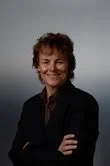March 7: Not your Daddy's Succession Planning
Program Description:
There has been much talk of the “new normal” in global businesses, but only lip service as to how to rethink and re-tool this process to ensure organizations can face the challenges coming their way in the context of talent management. The pitfalls and trends in succession planning and management must be addressed differently today. As you look at many succession plans in current organizations, they are irrelevant to todays’ workforce and strategic challenges. Massive change and organizational trends have caused traditional succession planning and management approaches to become obsolete. Global trends in every industry have huge implications for thinking about future leadership roles. Just these few statistics are daunting:
As of January 1, 2011, 10,000 baby boomers are turning 65 every day for the next 19 years (US Dept. of Labor)
In 2012, the 55 and older segment of the workforce will have increased 19%, almost four times the rate of growth for the overall labor force
By 2020, there will be 1.3 million college grads, and 5.9 million too few high school grads to meet employer needs (US Dept. of Labor)
67% of organizations do not currently have and formal succession planning process, (Cutting Edge)
Only 24% of organizations are confident in their ability to staff leadership positions during the next five years (Watson Wyatt)
68% of senior managers hired from the outside usually fail within the first 18 months (CCL)
However, another part of the new normal is that those in their 30’s and 40’s want to apply their own attitudes and values to the roles they assume. Needless to say, they are more skeptical than past generations. Institutions that had once employed their parents are not necessarily valid benchmarks any longer. Working hard doesn’t provide job security, organizations do not last forever, and leaders do not necessarily make the best choices. As these new leaders assume responsibility within organizations, they are more likely to challenge the status quo and question the veracity of practices that have been in place for many years (Wendover, 2011). This is also a workforce that has better training than any generation in history, invested mightily in technology and globalization. That said, these skills sets and confidence can mask a deficit of expertise, experience, and leadership maturity. Lastly, many knowledge workers today do not see their job as a calling. They are not looking to climb ladders once embraced by parents. When they are restless, they leave, it’s not personal. It’s just business.
The impact of the above can and will have monumental effects on your succession planning process. To prepare them for future roles, and more senior positions, it is incumbent for business leaders to understand these beliefs, and many other factors while these leaders assume those new and challenging responsibilities.
Best practices are all the more important for guiding human resource and business leaders in designing and executing more effective programs. Practices such as:
Top management participation
Rigorous and comprehensive assessment
Identification of future talent requirements pivotal to strategy execution
Structured and individualized developmental programs
Creation of talent databases
Open communication
This session will explore all of the above, and the audience will be encouraged and challenged to think through these issues collectively.
Presenter:
Donna Dimeena
Donna DiMenna is an organizational psychologist and business leader who has led Global HR consulting firms, was Chief HR Officer for a global print/custom graphics arts/e-commerce corporation, as well as co-led Strategic Workforce Planning at Cargill, a Fortune 250 company. She has worked across the globe in partnerships with clients in APAC, and EMEA. She was awarded 2012 Industry Leader by the Mpls-St. Paul Business Journal.
Go to https://www.mnodn.org/event-registration/?ee=25 to register.

